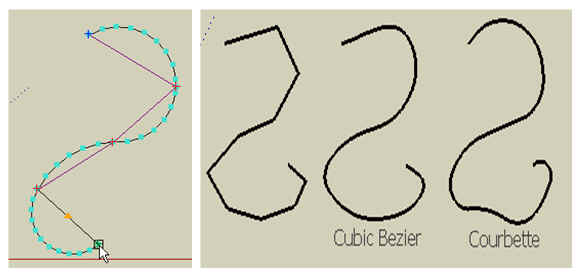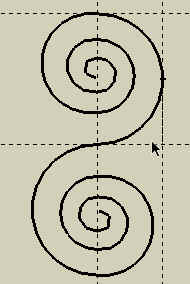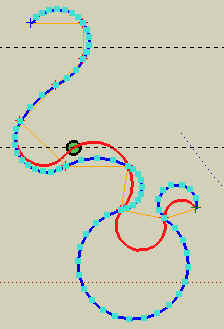Possible new drawing tool >> Fred06
-
The new "Spiro" drawing tool is in development for Inkscape.
http://screencasters.heathenx.org/wp-content/videos/ep067/ep067.html
It creates very fluid, contiguous, round curves. I imagine this could be useful for landscape architects.
If possible to create such a script it would be a nice function to have along side your bezier and b-spline rubies. -
thank you!
-
John,
I have already seen a similar request from Matt666, but he mentioned the feature was present in Autocad, based on just chaining arc of circles.
See http://escargot-archi.eu/forum/viewtopic.php?t=2661 (it is in French, but there are self-explanatory pictures)The Spiro function of Inkscape seems more sophisticated however.
Attached are two files implementing the Arc of Circle method, adpated to 3D. I called it Courbette.

Just drop the icon and the scriptlet in the BZ_Dir folder and restart Sketchup.Note that the 'Precision' parameteris a number of segments for a fullcircle (not the arc), which usually is 24 (default value). I just performed a quick correction to avoid having too many or too less intermediate points, based on the pixel precision on screen (so if you zoom, you get more arc points). As a standard function of BezierSpline, you can of course edit the curve or convert a Polyline into a Courbette (via the contextual menu).
Finally, on the picture, I compared the results of CubicBezier and Courbette, and I must say that (at least on the example), CubicBezier makes it smoother. But there might be other situations where Courbette is more appropriate (I guess for spirals).
Fredo
[Edit, 27 Jan 08 - 18:10]There was a minor issue with the default precision (set to 0), which was preventing to optionally close the Courbette via a Bezier curve. Fixed in current version.

-
Thank you Fredo!
-
Thanks for the thanks.
It might be useful for iron works, because it typically draws the kind of spirals you usually find in defense grids.

But it is much less appropriate to follow a defined contour, due to the high sensitivity created by the constraint to have portions made of circle arcs (just watch what happen by slightly changing one control point).

In addition, it is not symetrical, that is, when you edit a control point, it will change the whole shape following that control point, but not on the portion before.Conclusion: The Spiro feature of Inkscape is based on something much smarter.
If someone has an idea around Spiro, thanks
Fredo
-
http://libspiro.sourceforge.net/
LibSpiro is an Open Source implimentation of the Spiro algorithm. It should be possible to see how it all works from the example / source code.
Also... http://www.levien.com/spiro/ is the site of the inventor.
-
Excellent !!!!
Thank you so much Fredo !!!

-
@ampa said:
http://libspiro.sourceforge.net/
LibSpiro is an Open Source implimentation of the Spiro algorithm. It should be possible to see how it all works from the example / source code.
Also... http://www.levien.com/spiro/ is the site of the inventor.
I had a quick look, but it is very complex to understand, and I guess to reproduce. And the theory underneath is quite abstruse, based on clothoids (curves to make highway junctions), holonomic curves, and other nice mathematical theory, which however were all set out by mathematians from the 18th century (bernouilli, Euler, Fresnel, and others).
So if someone wants to give it a try....and then publish it as an extension of BezierSpline!!
As a consolation, I just realize that the Courbette allows to draw an arc of circle between 2 points which also includes a 3rd point.
Advertisement







